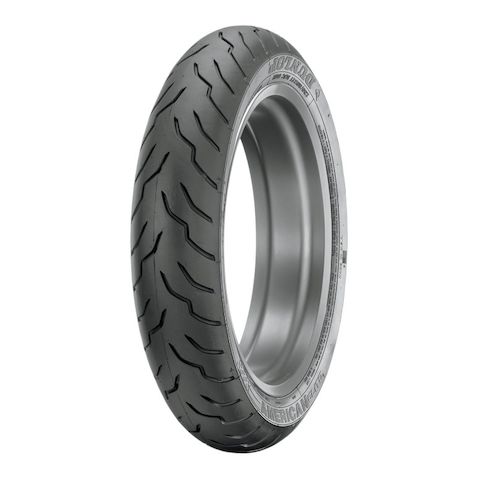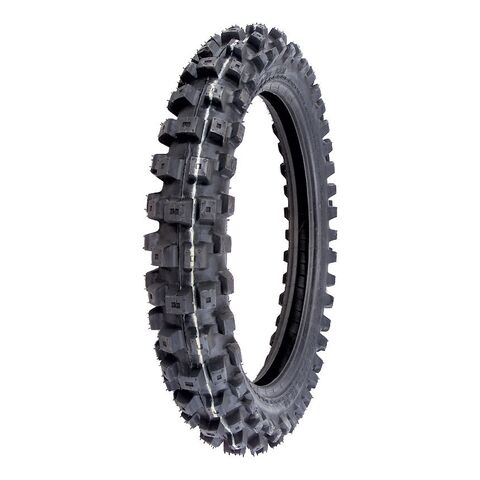Best Motorcycle Tires
OF 2025What's the best performance upgrade for your motorcycle? It's tempting to add an exotic exhaust system, a trick suspension setup, or a set of monster brakes, but the right set of tires is the most effective way to transform your motorcycle.
Plus, if you decide to make other improvements, the overall experience will be that much sweeter when you're rolling confidently on the right tires. Here at RevZilla, we log countless miles each year, testing all the latest tires from the industry's leading manufacturers. We are also deeply familiar with time-honored favorites, constantly comparing and checking our notes to find the clear winners for every riding style.
Pirelli’s sporty, silica-rich high-performance compound is engineered with a profile inspired by their work with the World Superbike Championship. Designed for aggressive road use, the Diablo Rosso IV tires offer agile response, quick turn-ins, and a large contact patch for improved adherence over previous models.
Made and tested in America, the Dunlop American Elite tires offer incredible longevity without making performance sacrifices like some of the competition. In fact, these tires are the same ones found on Harley-Davidson’s flagship models, and they are meant to lay down serious miles in all conditions. With the American Elite, Dunlop uses a harder center compound that resists premature wear during long highway stretches. A softer compound at the sides offers improved grip for the turns. Our customers consistently report an average of 12,000 to 15,000 miles from each set, with some outliers pushing 20,000 miles or more!
If you’re going to be on more technical terrain, and aren’t as worried about pavement performance, then the Motoz Tractionator RallZ Tires are our favorite pick for this year. Their aggressive profile, self-sharpening tread blocks, and hybrid natural/synthetic compound all combine to make for a high-performance off-road biased tire ready to take your ADV machine deep into roads less traveled.


We had to include the TKC80 Dual Sport Tires on this list as an honorable mention. They’re a perennial best-seller with good reason. Their rock-solid dependability and durability, predictable performance across a variety of conditions, and budget-friendly price point all combine for an option that’s tough for any ADV rider to pass up.



The Bridgestone M59 is a versatile front-tire that can be paired with a wide range of rears to tackle a ton of different terrains and conditions. If you’ll be switching from sand, to rock to mud, and more, this tire will perform admirably all day long. Keep in mind, this tire is not DOT-certified, so weigh your options if you’re looking for a more dual-sport application.
The VE-33S Gekkota tires from IRC were developed with the goal of making them the best option for single track riders and top pro enduro riders alike. Its 2-ply / breaker carcass structure resists punctures and helps provide stability over a wide range of speeds, while the gummy Gekkota compound grips where other tires slip. This is a true workhorse tire for riders looking to push their machines to the limit.
Frequently Asked Questions
As with most things motorcycling, this one comes down to having the right tool for the job. The best street motorcycle tires will offer plenty of grip for canyon-carving while being durable enough to log thousands of miles' worth of highway and around-town duty. In other words, these aren't one-and-done race slicks. Rather, they're a middle-of-the-road compromise between performance and longevity that balances rubber compound and tread pattern to get there.
The answer here depends on the dirt you dig and the frequency with which you dig it. Pure motocross bikes live strictly on earthen tracks; they need big and brutal knobs on a harder compound tire carcass to hook up in the loamy turns and berms. ADV bikes that spend considerable amounts of time covering highway slab mixed in with some fire roads will benefit from a 50-50 tire that's DOT-legal. Competition cross-country bikes and trail bikes exist in more of a middle ground, with occasional roadway or hard-pack surfaces forcing them to run something less aggressive than the MX knobbies.
We've got a fun and informative walk-through here, but the general process is as follows: remove the wheel from your motorcycle, deflate the tube or tire by removing the valve core, loosen the valve stem nut and any rim lock nuts, use a bead-breaker to get the tire off the rim bead, install any rim protectors and utilize tire irons to pry the old tire off the rim, check for rotational direction of the new tire and install one side over the rim bead, insert tube unless the tires are tubeless-type, begin to work the other side of the tire over the opposing rim bead, tighten valve stem and rim lock nuts, add air until the tire is fully seated.




















